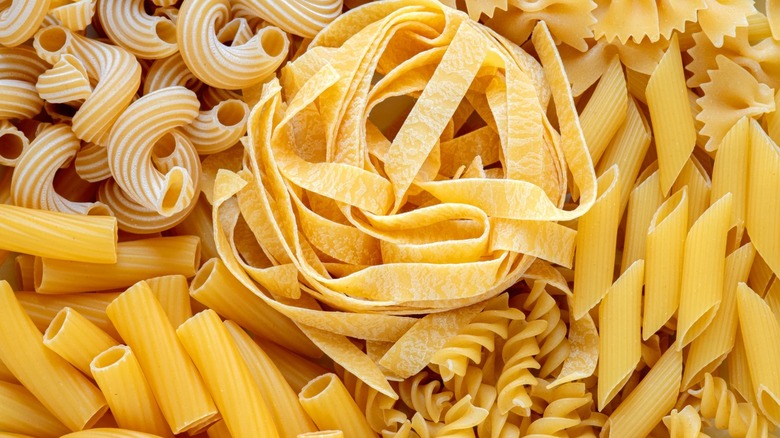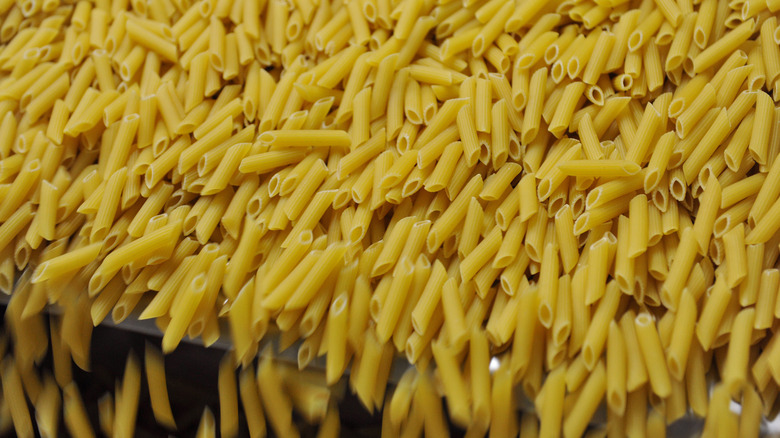Global Wheat Shortage May Cause A Shortage Of Pasta In 2023
Just a few years ago, stress-indused baking at the height of the pandemic resulted in a national wheat and yeast shortage. Now, we are experiencing a similar emptiness in the grain aisle at the grocery store, however rather than increased, panic-driven demand, wheat has been harder to come by for different reasons.
"There's just not enough grain in the world, and there won't be for the rest of this year and probably even into next year," said Eric Hansotia, CEO of AGCO, on CNBC's "Mad Money" last August. He went on to explain that the grain industry hadn't fully rebounded from the pandemic when Russia invaded Ukraine in February 2022. The tangled geopolitical landscape is complicated, but here is a brief synopsis on some of the relevant information pertaining specifically to wheat shortages. Russia and Ukraine produce 28% of global wheat exports, according to The Washington Post, and due to Russia's seizure of the Black Sea – blocking vital Ukrainian exports – Ukraine's wheat exports plummeted 46% in 2022.
Reuters reported that Russia is ramping up wheat production, upping their 2022-2023 prediction to 93.4 million tonnes, however they are keeping their exports steady to "build up stocks in the country." The situation was compounded by India, the world's second largest wheat producer, banning wheat exports in March 2022 due to rising temperatures destroying wheat crops.
So what does this all mean for the state of wheat and wheat-based products, like pasta, in 2023?
Don't be surprised by higher prices and low supply
Pasta is an affordable, comforting, shelf-stable favorite for households across the country. However, if you haven't started to see it already, the pasta aisle at your grocery store may be looking a little bare.
Pasta, like bread, cookies, and cereals, are made of wheat. A shortage in wheat means a shortage in all of these goods and a rise in prices. According to the Consumer Price Index, in the U.S., the cost of bread rose 15.7%, cereal and baked goods shot up 16.4%, and flour prices soared a whopping 24.9% in 2022.
Since the grain industry's dramatic lows, there have been some improvements. As of October, India is now allowing flour exports, but only from imported grain due to the continued fragility of their wheat crops. Ukraine was back on track to export goods, like wheat, as of July with the passing of the Black Sea Grain Initiative, brokered by the United Nations and Türkiye.
The reality is it will take time for the grain industry to bounce back from the disruptions of the pandemic and the war in Ukraine. In the meantime, prices for wheat-based goods remain high and supply remains low. But the outlook for wheat production is good, with the International Grain Council projecting 792 million tonnes to be produced for 2022-2023.

